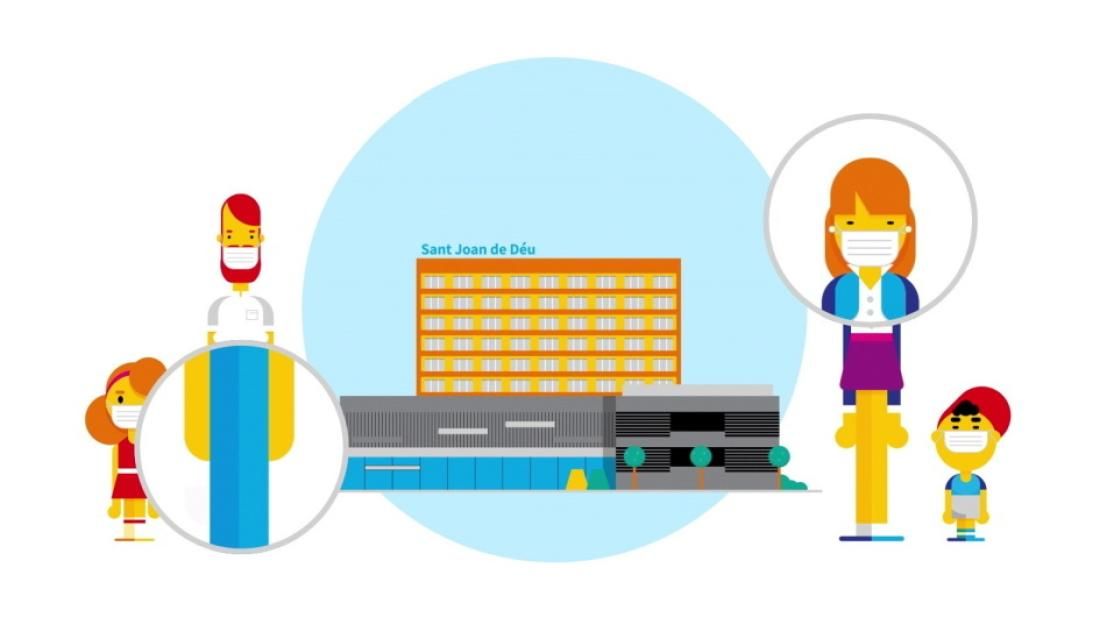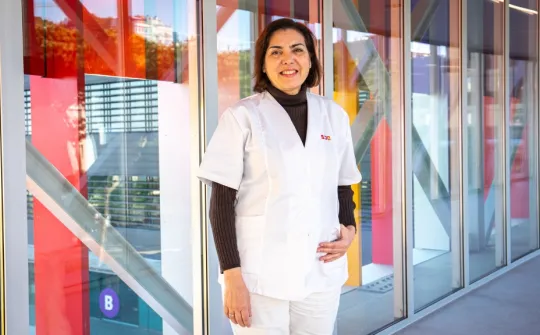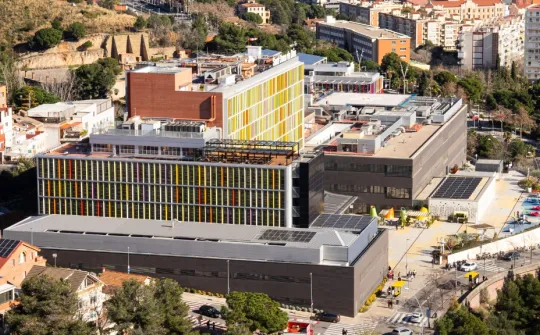
SJD Barcelona Children's Hospital has implemented special measures for hygiene, protection, testing, and re-arranging of spaces for the easing of lockdown related to COVID-19
The safe, gradual return to activities at SJD Barcelona Children's Hospital in a context of coexisting with coronavirus disease means a reduction in the number of patients and changes in the normal operation of the centre for prevention and safety reasons. Children who need medical care for different disorders will still be able to receive that care as they did before, either through the digital or telephone channels designed for use by their families or, if necessary, with a face-to-face visit.
We explain below what will happen in the lockdown exit or easing of the lockdown phase in order to return to a new normal with assurances for both patients and healthcare professionals.
1. Telematic appointments
In order to minimise risky contact, we are prioritising telematic appointments in cases that do not require an on-site visit to assess signs or symptoms, resolve uncertainties or give results or second opinions.
2. Contact beforehand
In situations where it is necessary to visit the hospital centre (treatments that have to be carried out in the hospital, operations or diagnostic tests that can't be postponed), we will contact you and give you information and instructions on what to do.
* IMPORTANT: You may receive the instructions in different ways and they may differ, depending on the type of patient and the type of appointment. The processes are standardised but may vary depending on each case.
3. Safe access
You should only come to the Hospital if you have an appointment and following the protection measures set out by the health authorities.
4. Screening of possible cases
Depending on the type of appointment you are attending, you will be given a test of some kind. The type of test (taking your temperature, serological test or reactive test) will depend on why you are visiting the hospital and each situation in particular, with priority being given to the most vulnerable groups.
If any cases are found to be positive for coronavirus disease, special measures will be taken. If the patient needs urgent care, they will immediately be transferred to a separated area of the hospital, where they will be treated in isolation. However, if the patient does not need urgent care, they will have to go home, where they will be monitored remotely until they recover from the infection. Once the patient has recovered and the recommended time has passed, the medical care originally planned will be restarted (either telematically or with a face-to-face visit).
5. Entry to the hospital: control measures
If you have an appointment for a visit to the hospital and the result of the screening is favourable, when you arrive, patient and companion will go through a secure access point before the entrance. In this area, it will be checked that both patient and companion are suitably protected and you will be instructed on the distancing rules to follow in the hospital.
6. Alcohol-based solution and face mask
People who pass the security check can then access the hospital, which is fully prepared to safeguard the children, their companions and the healthcare teams. Different posts have been set up where the necessary protection material is provided (alcohol-based solution and face masks).
7. Waiting times and safe distancing
The times for face-to-face visits have been restructured with the aim of minimising waiting times in common spaces and so minimising possible risky contact with other people. Separation partitions have also been set up at the patient care desks and there are signs showing the safe distancing to be adhered to in the waiting rooms and common areas.
8. Preventive tests among our healthcare professionals
All the healthcare professionals attending to you will have previously been subject to regular preventive tests.
9. Special cleaning and disinfection measures
Special protection, cleaning and disinfection measures have also been put in place. You'll see that the spaces have been rearranged and medical care reorganised to prevent people having to wait.
10. Telematic monitoring of all types of patients
When the visit is over we'll give you the information you need to go back home and, if possible, continue the patient's care and monitoring remotely.
Keep informed through our website and the usual communication channels.



